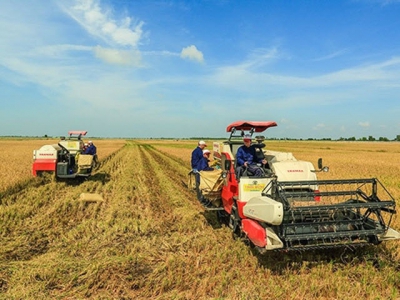Da Bac district sees growth potential from organic medicinal plant cultivation

After two years of implementation, the medicinal plant cultivation model in Da Bac district’s Yen Hoa commune has brought about practical economic outcomes. With its potential, the model is planned to be replicated in the coming time.
The model of growing organic medicinal plants in Yen Hoa commune (Da Bac) initially bring about practical results.
Realising such benefits, locals have so far created favourable conditions for the cooperative to lease over 11 hectares of land to expand its cultivation area. The cooperative creates regular jobs for 14 local workers, with an average income of 5 – 6 million VND per person per month.
Determining that developing sustainable agriculture requires organic production, right from the beginning, the cooperative has cultivated its medicinal plant garden completely without using chemical fertilizers and pesticides. Instead, organic fertilizers and herbal pesticides have been ultilised.
Luong Van Xung, Chairman of the Yen Hoa People's Committee, said medicinal plants are suitable for local soil conditions. In addition to the leased land, there are many areas potential for further cultivation expansion. He also pledged the local authorities’ support for businesses to invest in new models serving socio-economic development.
In the coming time, Da Bac aims to expand its areas for organic medicinal plants to 25 – 30ha by 2025. For the target, the district will build mechanisms and issue policies to attract resources from organisations and individuals for the development of the plantations and processing technologies. The cultivation of native medicinal plants is encouraged.
Related news
 Positive signals from agricultural sector
Positive signals from agricultural sector The Covid-19 pandemic is developing complicatedly globally, but agricultural exports of Vietnam in the first six months of this year still exceed the set plan.
 Đồng Tháp launches agricultural products website
Đồng Tháp launches agricultural products website The southern province of Đồng Tháp launched a website to sell the provincial agricultural products and specialities at htxdacsandongthap.com on Wednesday.
 Hoa Binh boosts value chain linkage to develop agricultural economy
Hoa Binh boosts value chain linkage to develop agricultural economy In recent years, chains serving agricultural product consumption have been formed in line with the conditions of each region.